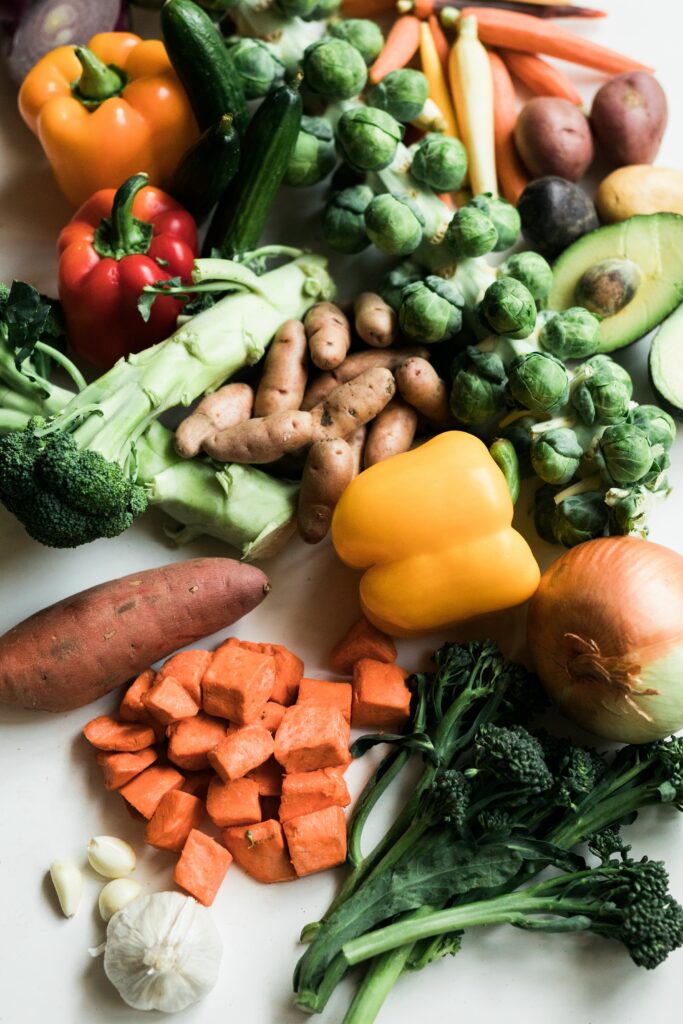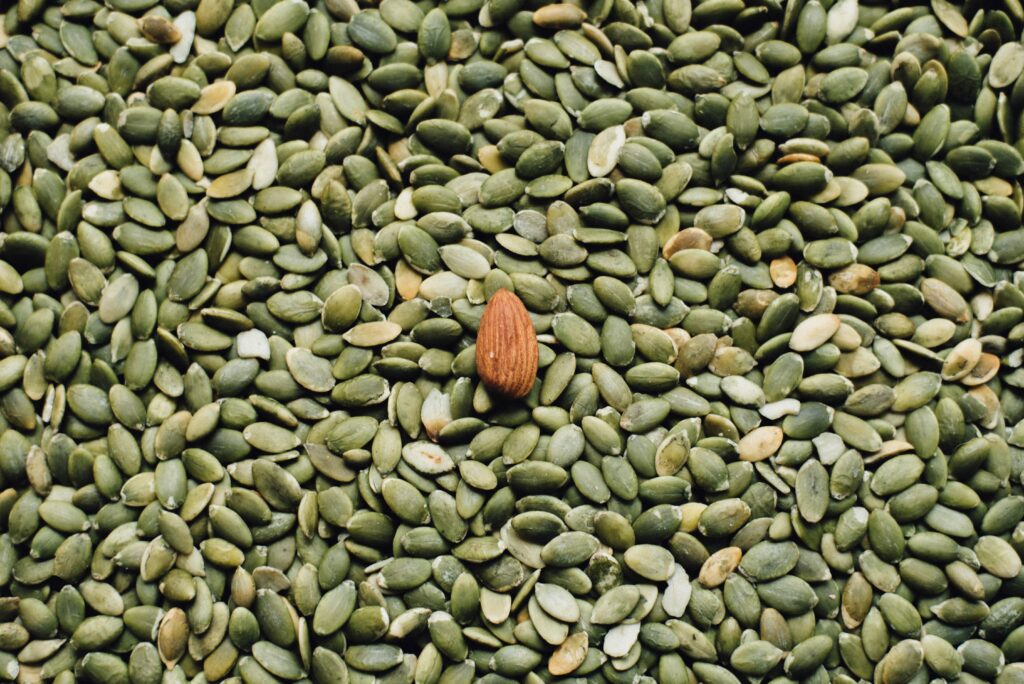While most of us spend our lives dwelling on the past or trying to predict the future, there’s no time like the present. Now, more than ever, is an opportunity to fuel your body with nutrient-dense foods. When it comes to eating well, start small and be practical. There’s no need for restrictive diets or a complete pantry overhaul (unless that calls to you, of course). It’s all about progress over perfection. Speaking of progress, let’s talk about longevity. The longer we live, the more we can progress, evolve, chase our dreams, and become the best versions of ourselves. But how to expand longevity? Along with stress management, exercise, and sleep, what we eat can either help or hinder our ability to live a long life. In today’s article, I’m unveiling nutrients to rule your diet. Here’s to health and vitality—now and in the future.

How your diet Impacts your life expectancy
While there are many factors—like family history, lifestyle, and age—that can affect how long you live, there’s no shortage of research to back up the very strong correlation between diet and longevity. It’s true: you are what you eat. Food doesn’t just affect how we function, it impacts every single process inside our cells. To live long, healthy lives, it’s imperative to eat nutrient-dense foods. These are the foods that provide energy, reduce the risk of illness, and maintain strong, capable bodies. Fresh, colorful produce helps us perform optimally, maintain wellness, and fight disease. When we eat pro-inflammatory foods, however, we’re not supporting our longevity. When we have chronic blood sugar spikes, we’re not supporting our longevity. Heaps of sugar in our coffee? Not exactly the nutrients to rule your diet.

Eating Healthy on a Budget
To dispel the rumors, eating healthy on a budget is possible. In fact, it’s easier than you’re led to believe. Different foods cost different prices, yes, but not all healthy food is expensive. On the flip side, not all unhealthy food is cheap. This misunderstanding poses a risk to our overall health and wellness. More on that here. Said differently: you can focus on nutrients to rule your diet—on a budget. From meal planning to shopping in season to buying frozen produce, there are simple ways to eat healthily and affordably. In fact, the best-of-the-best foods for longevity aren’t expensive adaptogens, powders, etc. They’re whole, colorful foods—spinach, kale, beet greens, berries, beans, and more. Think the Mediterranean diet. All year long, these are the foods that dominate Blue Zone meals.

What is The Blue Zone Diet?
To further knock the myth that eating healthy is expensive, let’s talk about the Blue Zones. What began as a National Geographic expedition to uncover the secrets of longevity evolved into discovering where people consistently live over 100 years old. A few of the Blue Zone cities are Ikaria, Greece, Okinawa, Japan, and the Nicoya Peninsula in Costa Rica. These groups may not be the wealthiest people in the world (according to GDP), but they have many similarities. Including, what they eat. For the most part, they consume minimal animal protein, whole grains, fresh vegetables, fruits, olive oil, seeds, and nuts. In other words, ingredients that are local, economical, and sustainably grown.
Eat more whole, unprocessed foods
Considering those who live in the Blue Zones are living proof of longevity, we want to follow suit. A bulk of their diet includes anti-aging foods and healthy eating habits. Longevity experts agree. Eating more fruits, vegetables, whole grains, legumes, nuts and seeds, and good amounts of omega-3s (from fish, nuts, seeds, or algae), while minimizing refined carbohydrates will not only improve your odds of living more healthfully, but it will likely add more years to your life, too. Ultimately, if you want to live longer and be healthier, you have to fuel your body with nutrient-dense foods.

7 Nutrients to rule your diet
Nutrients to rule your diet are fridge and pantry staples so load up on these seven ingredients to create wholesome, anti-aging meals.
1. Berries
This goes without saying, but regular consumption of fruits and vegetables is associated with greater life expectancy. A recent meta-analysis found that for every 200-gram (or 7-ounce) increase in fruits and vegetables per day, participants enjoyed a 10% lower risk of premature death. The better news? Maximum benefit was seen at 800 grams (or 28 ounces) per day—a 31% lower risk of premature death—with foods including berries. Furthermore, in two different models of aging, blueberries have been shown to extend life span. Blueberries contain specific flavonoid molecules that fight DNA damage and slow age-related damage to brain cells. Consume at least 1 cup of berries per day.
2. Seeds
Seeds contain key nutrients. Think: fiber, protein, and omega-3 fatty acids. All of these can improve heart and bone health. And a healthy heart, plus healthy bones, equates to longevity. Fiber, in particular, is important for living a long life. Those who add more fiber to their diet also add more years to their lives. In fact, a 2014 meta-analysis showed that for every 10-gram increase in fiber per day, the risk of premature death was lowered by 11%. However, the average American is only eating 16 grams of fiber per day (the daily target should be 28+ grams per day). The best place to get more fiber? Through a wide variety of whole, plant foods. Aim to add one to two tablespoons of chia seeds or ground flaxseed to your daily yogurt bowl, low-sugar cereal, salad, or smoothie.
3. Cruciferous Vegetables
Cruciferous veggies are vegetable powerhouses. They have the unique ability to modify human hormones, activate the body’s natural detoxification system, and inhibit the growth of cancerous cells. In fact, the cruciferous phytochemical, sulforaphane, has been found to protect blood vessel walls from inflammatory signaling that can lead to heart disease. Cruciferous vegetables are incredibly nutrient-dense. Eat a variety in both raw (if you can tolerate them) and cooked, daily—broccoli, cauliflower, Brussels sprouts, kale, cabbage, etc. The sky’s the limit when it comes to cruciferous veg consumption.
4. Leafy Greens
Leafy green vegetables (arugula, spinach, bok choy, collard greens, romaine lettuce, etc.) are associated with reduced risk of heart attack, stroke, diabetes, and several cancers. Leafy greens are also rich in the essential B-vitamin folate plus lutein and zeaxanthin, carotenoids that protect the eyes from light damage. To maximize the health benefits of leafy greens, eat them with a source of healthy fats (extra-virgin olive oil, avocado, nuts, seeds, etc.). Eat as many leafy greens—raw or cooked—as possible!
5. Mushrooms
Mushrooms have quite an array of beneficial properties. Studies on different types of mushrooms have found anti-inflammatory effects, enhanced immune cell activity, prevention of DNA damage, slowed cancer cell growth, and angiogenesis inhibition. Mushrooms are also a wonderful source of nutrients, particularly vitamin D, scoring a healthy dose of anti-aging benefits. Add 1.5 to 2.5 cups of mushrooms per week to your savory dishes.
6. Turmeric
This golden spice has been shown to provide a myriad of health benefits, including preventing heart disease, Alzheimer’s, and cancer, as well as warding off depression and arthritis. Curcumin—the active ingredient in turmeric—is what gives this super-spice its inflammation-fighting powers. Add turmeric to everything from eggs and roasted veggies to soups and smoothies. Safe consumption of tumeric includes upwards of 1 teaspoon per day.
7. Walnuts
Nuts are a high-nutrient source of healthful fats, plant protein, fiber, antioxidants, minerals, and more. They’re also low-glycemic, aiding in blood sugar balance. Despite their caloric density, nut consumption is associated with lower body weight—potentially due to appetite suppression from heart-healthy components. Aim to eat two modest handfuls of nuts per day. Almonds are high in vitamin E and magnesium, Brazil nuts are high in selenium, and walnuts are high in omega-3 fatty acids. In fact, this study found that eating five or more servings of walnuts per week was associated with a 14% lower risk of death (from any cause), a 25% lower risk of dying from cardiovascular diseases, and a gain of about 1.3 years of life expectancy.

Images courtesy of Unsplash.
This article contains affiliate links. Thank you for supporting Wellness with Edie!
This article is for informational purposes only. It is not, nor is it intended to be, a substitute for professional medical advice, diagnosis, or treatment and we recommend that you always consult with your healthcare provider.



Leave a Reply